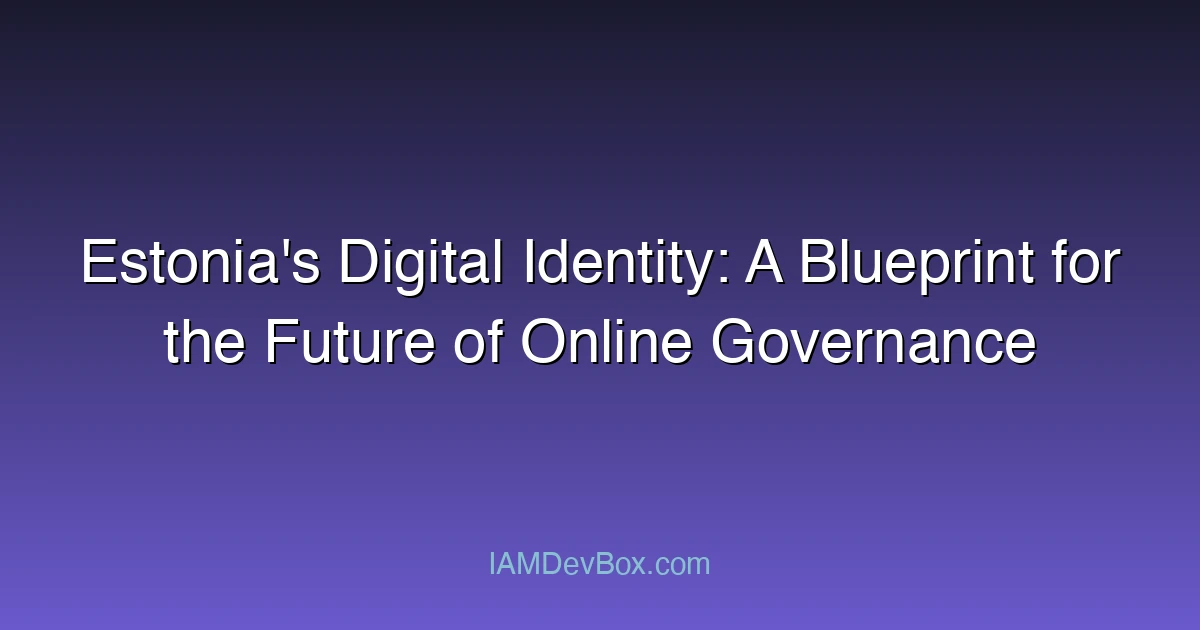In an era where digital transformation is reshaping every aspect of our lives, Estonia stands out as a pioneer in creating a seamless, secure, and citizen-centric digital identity framework. The Estonian digital identity (eID) system is often hailed as one of the most advanced in the world, enabling citizens to access government services, conduct financial transactions, and even vote online with unparalleled ease and security. This blog post explores the revolutionary model of Estonia’s digital identity and its implications for the future of governance and cybersecurity.
The Evolution of Digital Identity
Digital identity is more than just a username and password; it is the foundation of trust in the digital world. In Estonia, the concept of digital identity began taking shape in the late 1990s, driven by the vision of creating a fully digital society. The eID system, launched in 2001, was a groundbreaking initiative that allowed citizens to authenticate themselves electronically for various services.
How Estonia’s eID System Works
The Estonian digital identity system is built on a robust public-key infrastructure (PKI) that ensures secure communication and authentication. Every citizen receives a digital identity card (ID card) or a mobile ID, which contains a unique public and private key pair. These keys are used to sign and encrypt digital documents, ensuring their authenticity and confidentiality.
Key Features of Estonia’s eID System:
- Universal Access: Every citizen, resident, and even businesses can use the eID system.
- Multi-Use: The same digital identity can be used for accessing government services, online banking, and even voting.
- High Security: The system employs advanced cryptographic techniques to protect user data.
- User-Centric Design: The interface is intuitive, making it easy for even non-tech-savvy users to navigate.
The Impact of Estonia’s Digital Identity System
Estonia’s digital identity system has transformed the way citizens interact with the government and each other. By eliminating the need for physical documents and manual processes, the eID system has significantly reduced administrative burdens and increased efficiency.
Real-World Applications of Estonia’s eID
- eHealth: Citizens can access their medical records, schedule appointments, and receive prescriptions online using their eID.
- eBusiness: Companies can register, file taxes, and manage payroll digitally, streamlining operations.
- eVote: Estonia is one of the few countries where citizens can vote online in national elections, ensuring convenience and accessibility.
Code Example: Integrating eID into a Web Application
Here’s a simplified example of how a web application could integrate the eID authentication process:
// Step 1: Initialize the eID authentication client
const eIdClient = new EIDClient();
// Step 2: Request user authentication
eIdClient.authenticate()
.then(response => {
// Step 3: Verify the digital signature
const signature = response.signature;
const publicKey = response.publicKey;
const isValid = verifySignature(signature, publicKey);
if (isValid) {
// Step 4: Grant access to the service
grantAccess(response.userId);
} else {
// Handle authentication failure
throw new Error('Invalid signature');
}
})
.catch(error => {
console.error('Authentication failed:', error);
});
// Helper function to verify the signature
function verifySignature(signature, publicKey) {
// Implement cryptographic verification logic here
return true; // Simplified for demonstration
}
Challenges and Considerations
While Estonia’s digital identity system is a model for others to follow, it is not without challenges. Issues such as cybersecurity threats, digital exclusion, and the need for continuous innovation must be addressed to ensure the system remains robust and accessible.
Extended Questions for Readers
- How can other countries adapt Estonia’s digital identity model to their unique contexts?
- What are the potential risks of relying too heavily on digital identity systems?
- How can governments ensure that digital identity systems are inclusive and accessible to all citizens, including those with limited digital literacy?
The Future of Digital Identity
Estonia’s digital identity system is more than just a technical achievement; it is a vision of what a fully digital society can look like. As other countries look to follow in Estonia’s footsteps, the lessons learned from this revolutionary model will be invaluable. By prioritizing security, usability, and citizen-centric design, we can create digital identity systems that empower individuals and transform governance for the better.
In conclusion, Estonia’s digital identity system is a testament to the power of innovation in shaping the future of governance. As we continue to navigate the digital landscape, the lessons from Estonia will undoubtedly play a crucial role in shaping the next generation of digital identity solutions.
Tags: Digital Identity, Estonia, eID, Digital Governance, Cybersecurity
